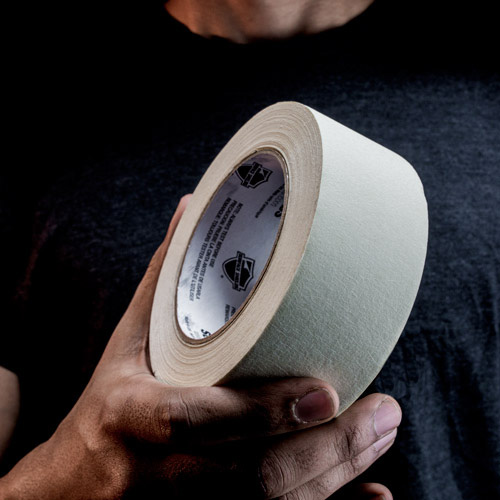- Products
- About Us
- Resources
- Contact UsCUSTOMER SUPPORT HOURSMONDAY-FRIDAY 7:30 AM - 5:30 PM CSTPHONE NUMBERSTAY CONNECTED
Surface Shields Masking Tape is a general purpose paper tape that features a medium tack adhesion, providing an instant, secure bond to most materials and surfaces without leaving a sticky residue for clean removal. This 2” paper is easy to tear and designed with a pressure-sensitive, synthetic rubber adhesive. It lays fast and flat, which makes it great for masking off areas during painting projects to avoid paint bleed. Surface Shields masking tape is also perfect for packing, bundling, and mounting light materials.
General purpose masking tape is nontoxic, liquid resistant, and odor free. Test before use. For more options, view Surface Shields full line of adhesive tapes.
Let us find you a distributor or request a quote and we’ll provide pricing options right away. Surface Shields only sells through distribution.

| Available Colors | Natural |
|---|---|
| Recyclable | No |
| Reusable | No |
| Breathable | No |
| Adhesive | Yes |
| Liquid Resistant | Yes |
| Flame Retardant | No |
Does masking tape damage walls?
Masking tape can potentially peel off paint, so it is advised to always test before use on any surface.
Is masking tape the same as painter’s tape?
Masking tape has a stronger adhesive than traditional painter’s tape. Painter’s tape is traditionally low tack, and will not peel paint off walls and surfaces.
What is masking tape?
Masking tape is a pressure-sensitive adhesive tape used in painting and other crafting projects. It has a low-tack adhesive that makes it easy to stick to surfaces and remove without leaving residue. Masking tape can be found in various widths, with most standard rolls ranging from 1/16 to 2 inches wide. It is most often used to mask off areas to create clean and defined lines while painting or staining surfaces.
Can you use masking tape for drywall?
Masking Tape is unsuitable for drywall use because it is designed to be removed easily and does not provide a strong bond. Additionally, masking tape will leave a residue behind once removed, which could damage the underlying surface. Drywall tape is specifically designed for use on drywall and provides an extra-strong bond that prevents cracking or crumbling of the drywall. It should be used instead, especially when patching and repairing drywall surfaces.
